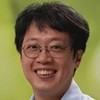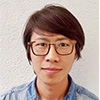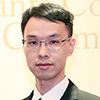Advanced Electron Microscopy and Instrumentation
Invited Speakers

Topic
Ex situ and in situ Scanning Transmission Electron Microscopy Studies of Functional Perovskite Materials and Devices

Topic
Understanding Electrocatalyst Re-structuring during Reaction with Electrochemical Cell Transmission Electron Microscopy

Topic
Atomic Resolution 3D Dynamics of Helix Materials:present and future

Topic
Progress, prospects and challenges for in situ transmission electron microscopy of electrical and magnetic switching processes in functional materials and nanoscale devices

Topic
4D electron microscopy and its applications in non-equilibrium dynamics

Topic
A few “quantum” and spooky ideas and experiments in electron microscopy

Topic
Extending the Capabilities of Energy- and Momentum-Resolved STEM

Maximilian Haider
CEOS Company, Germany
University of Karlsruhe, Germany
Wolf Prize in Physics 2011
Kavli Prize in Nanoscience (2020)
University of Karlsruhe, Germany
Wolf Prize in Physics 2011
Kavli Prize in Nanoscience (2020)
Biography
Topic
Prospects of future instrumental developments for advanced electron microscopy

Xiaodong Han
Southern University of Science and Technology, China
Beijing University of Science and Technology, China
Beijing University of Science and Technology, China
Biography
Topic
Developing Atomic Resolved Mechanical Testing System and Measuring Grain/Twin Boundary Plasticity at Atomic Level

Topic
Accurate Retrieval of Three-Dimensional Atomic Dynamics of Moiré Materials

Topic
Quantum Resonator in A Time-resolved Electron Microscope

Topic
Advanced Transmission Electron Microscopy for the Development of High-Efficiency Solar Cells

Topic
From functionalizing inorganic two-dimensional materials on the level of single atoms towards molecular imaging of organic two-dimensional materials

Topic
Making every electron count – Ptychography at low dose

Christian Kisielowski
Lawrence Berkeley National Laboratory, USA
Biography
Topic
Probing Dynamic Responses of Nano-Materials at the Boundary between Classical and Quantum Mechanics detecting Coherent-Inelastic Electron Self-interferences

Topic
Contrast formation in Quantum Electron Microscopy

Topic
Cryo-electron tomography and subtomogram averaging for high-resolution structure determination of macromolecules

Topic
Entanglement-Enhanced Electron Microscopy and Its Generalizations

Topic
Large-Scale 3D Atomic Resolution Phase-Contrast Imaging from 4D-STEM Measurements

Topic
Instrumental developments in ultrafast transmission electron microscopy

Topic
Tunable X-ray Radiation from Quantum Free-electron Radiation

Topic
Nanophotonic electron accelerators towards electron microscopy

Murat Sivis
Max-Planck Institute for Multidisciplinary Sciences, Germany
University of Göttingen, Germany
University of Göttingen, Germany
Biography
Topic
Mapping and controlling of optical near fields in an ultrafast transmission electron microscope

Topic
Applied Low Current Microscopy

Topic
In situ electron microscopy for electron radiolysis effect and dose dependence of functional metal oxides

Topic
Tailoring two dimensional materials in LEEM

Knut Urban
Ernst Ruska-Center for Microscopy and Spectroscopy with Electrons (ER-C), Helmholtz Research Center Jülich, Germany
Wolf Prize in Physics 2011
Kavli Prize in Nanoscience (2020)
Wolf Prize in Physics 2011
Kavli Prize in Nanoscience (2020)
Biography
Topic
Precision measurements of atomic positions and displacements in aberration-corrected conventional transmission electron microscopy (CTEM)

Topic
The Principle of Aberration Corrected 300 kV Cryo-EM and Its Application to Thick Specimens in Biology

Topic
Observing while it happens: CVD growth of graphene inside a scanning electron microscope

Topic
Probing Nanoscale and Atomic-Level Exotic Vibrational Modes and Phonon Dynamics using Monochromated Electron Energy-Loss Spectroscopy

Topic
In situ transmission electron microscopy on two-dimensional ferroic chalcogenides

Topic
Progress, prospects and challenges for achromatic imaging of electron energy loss spectroscopy

Topic
Single-atom microscopy and spectroscopy for 2D materials

Topic
